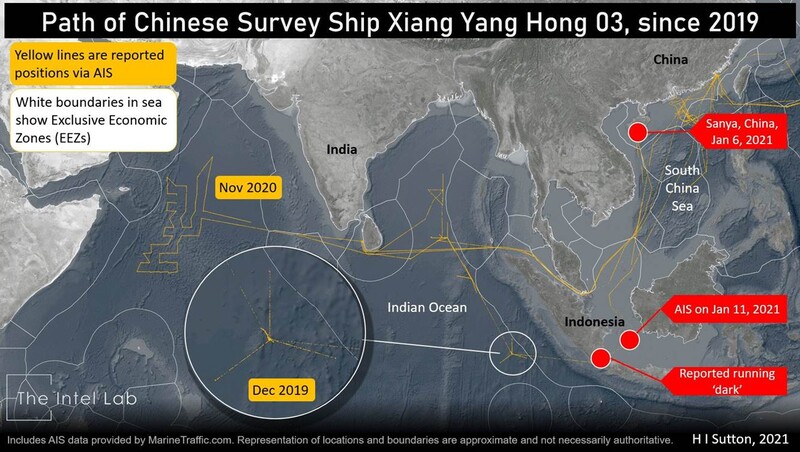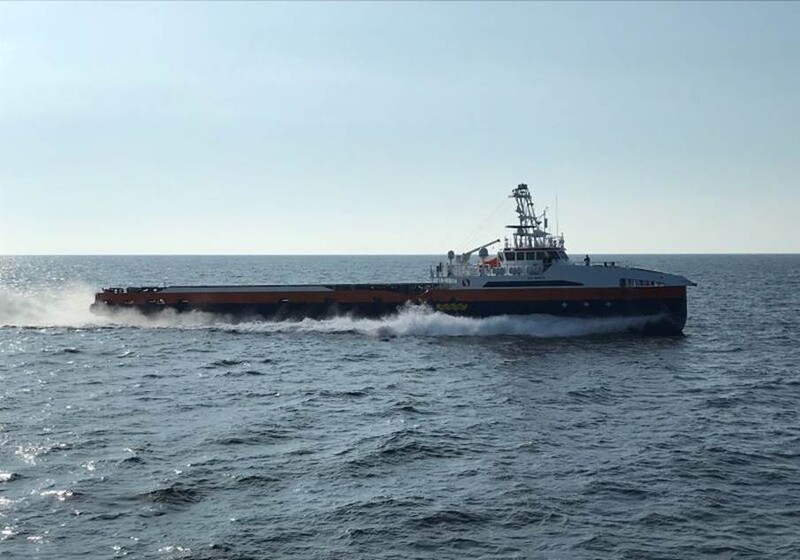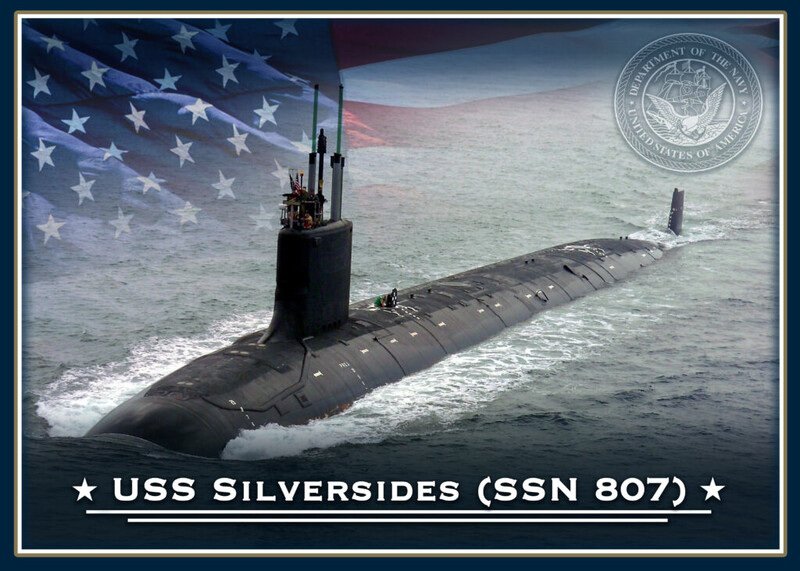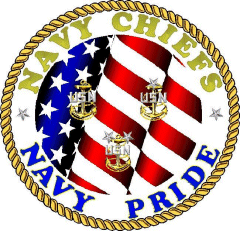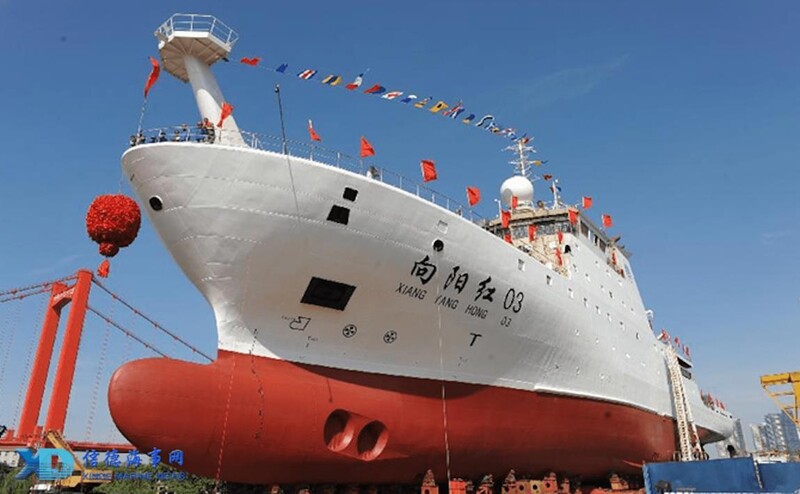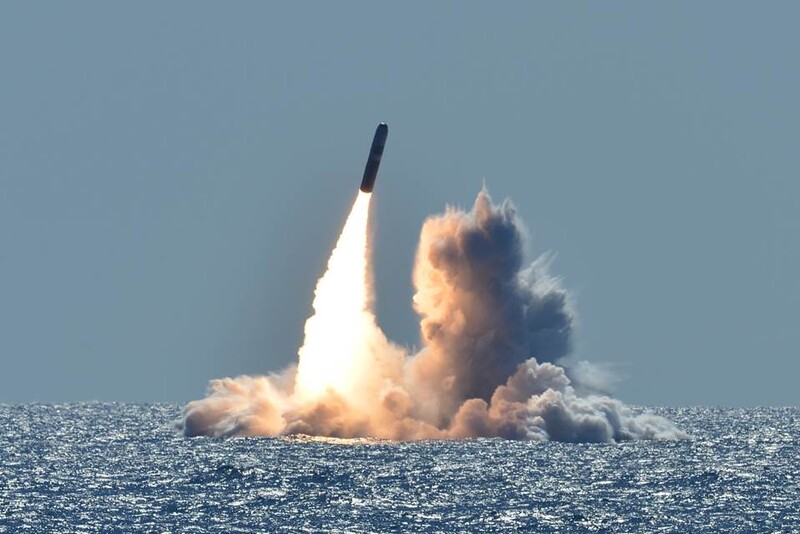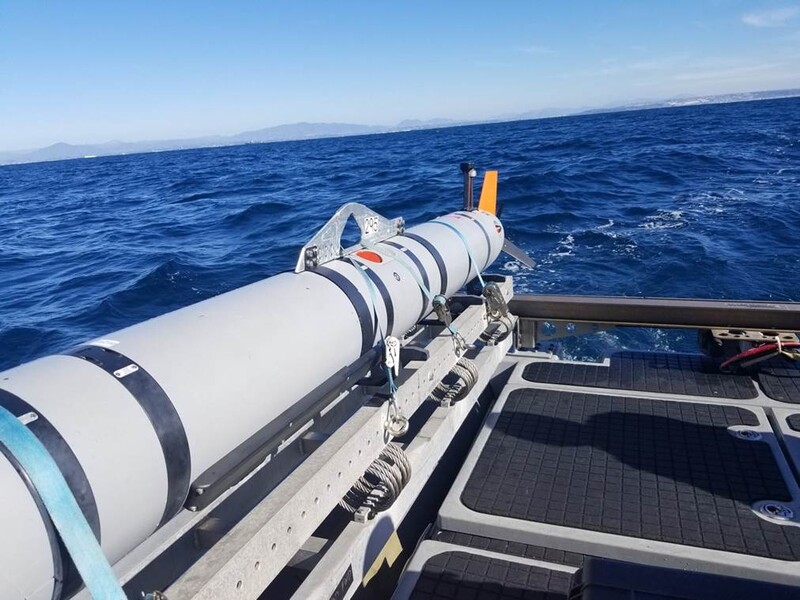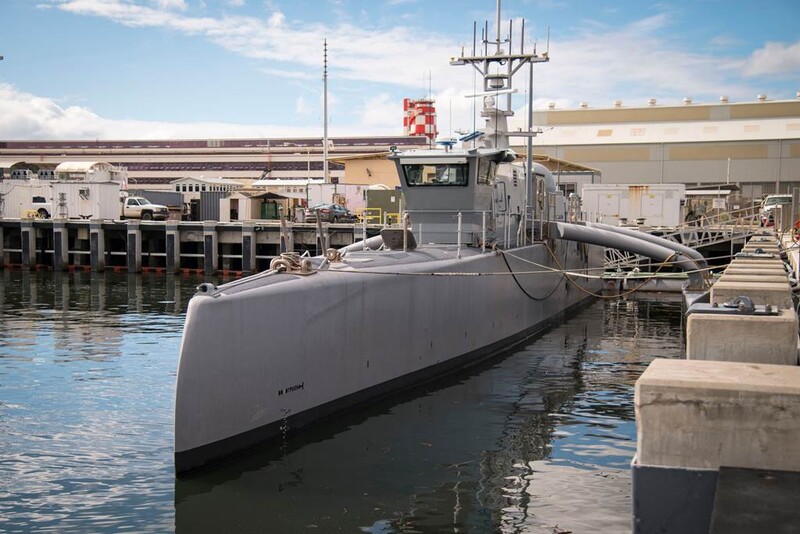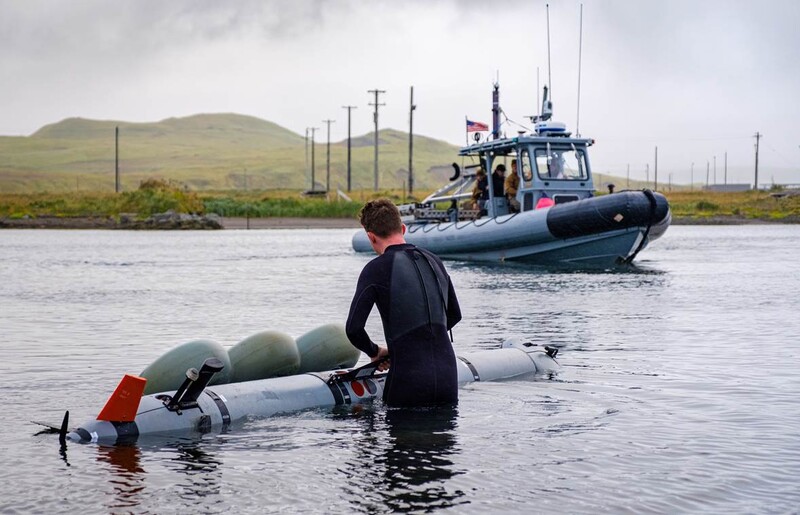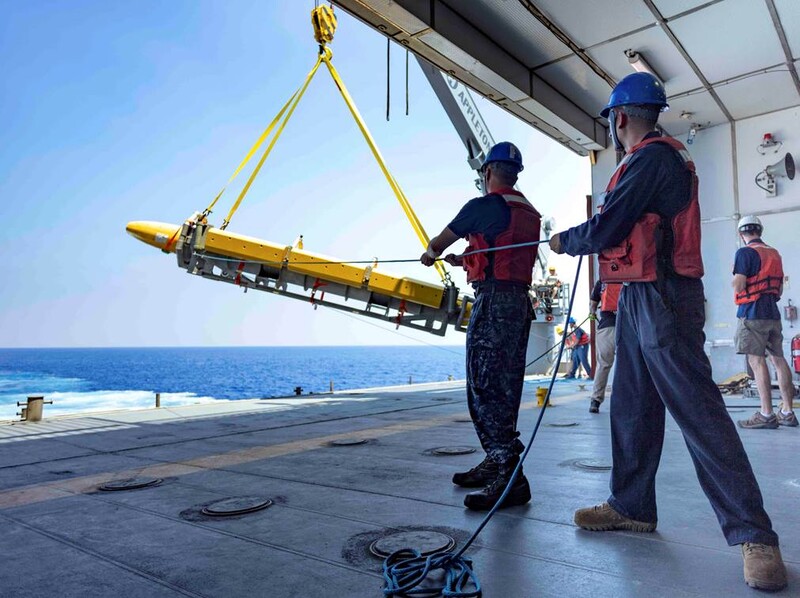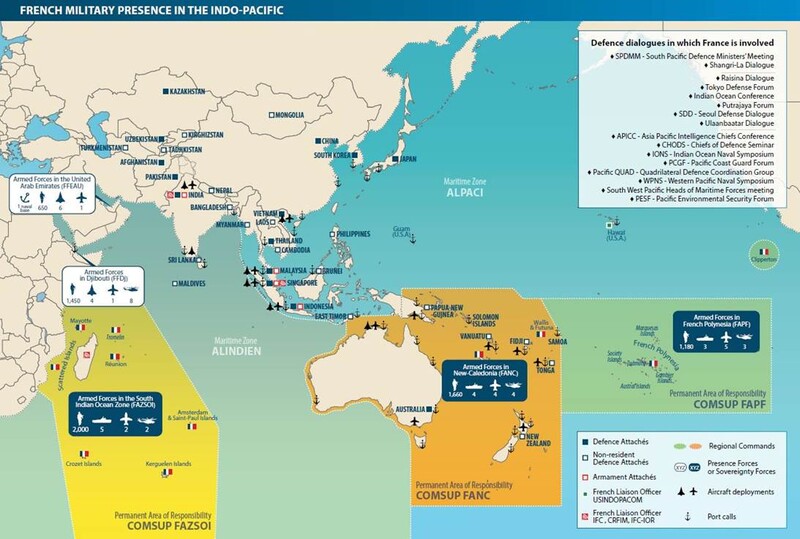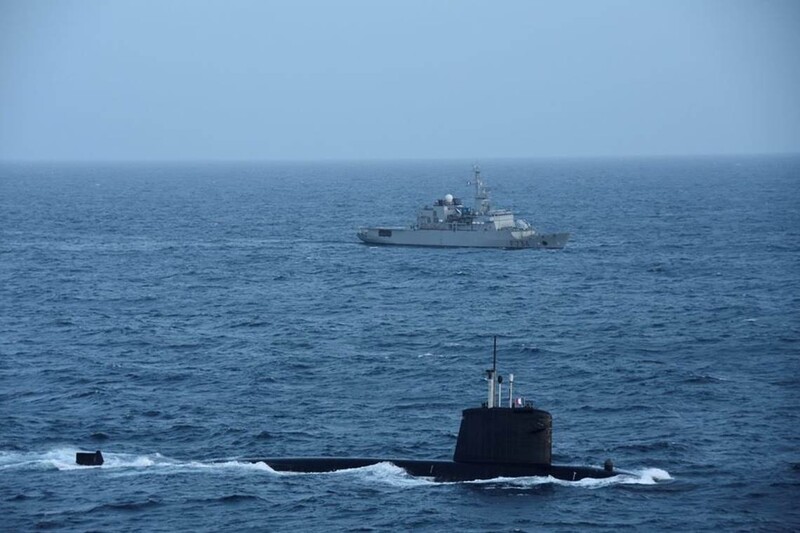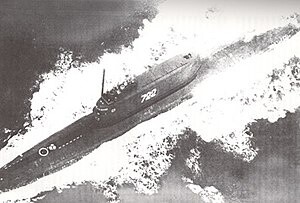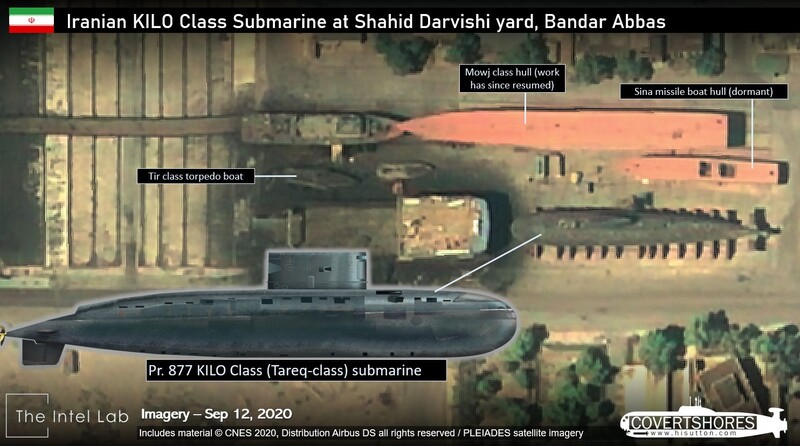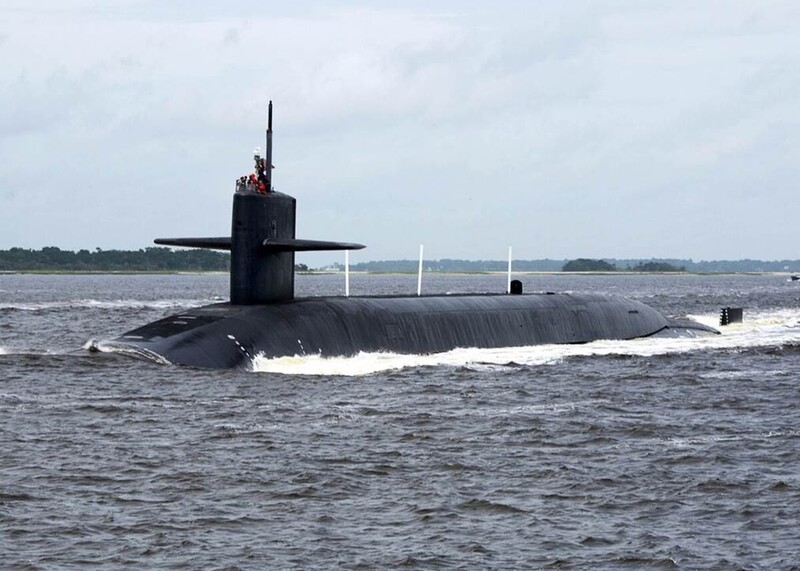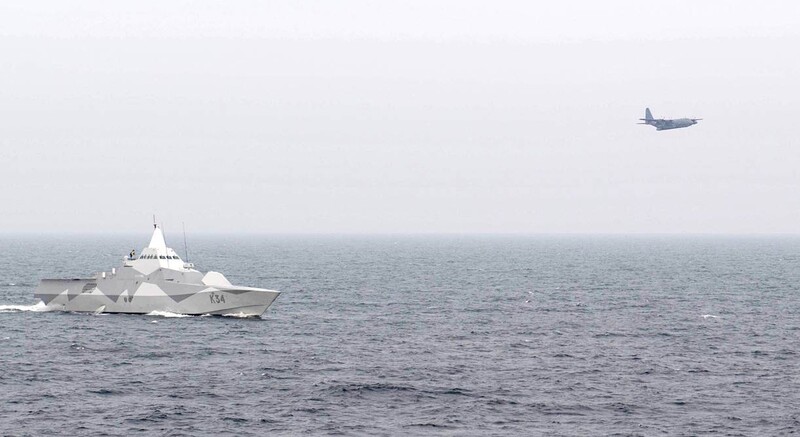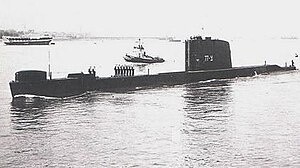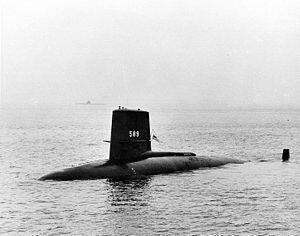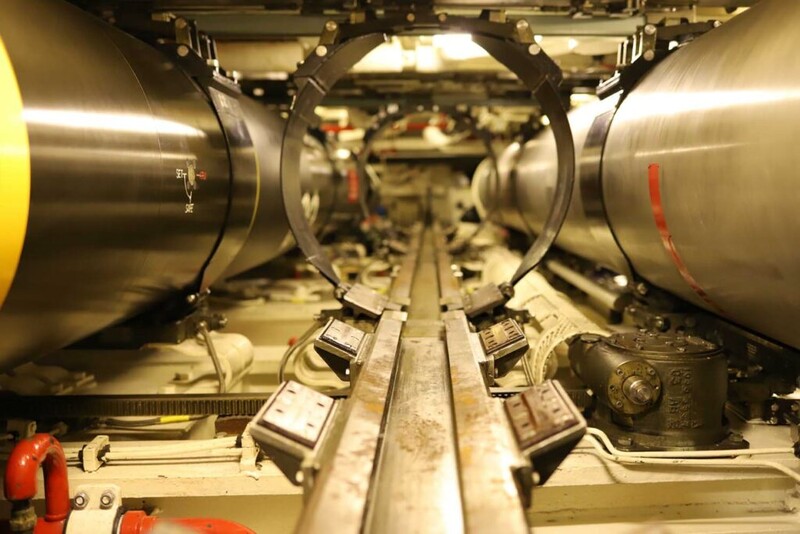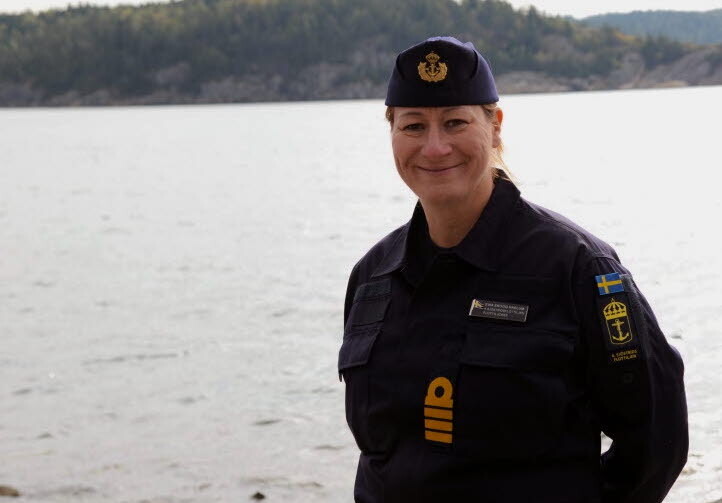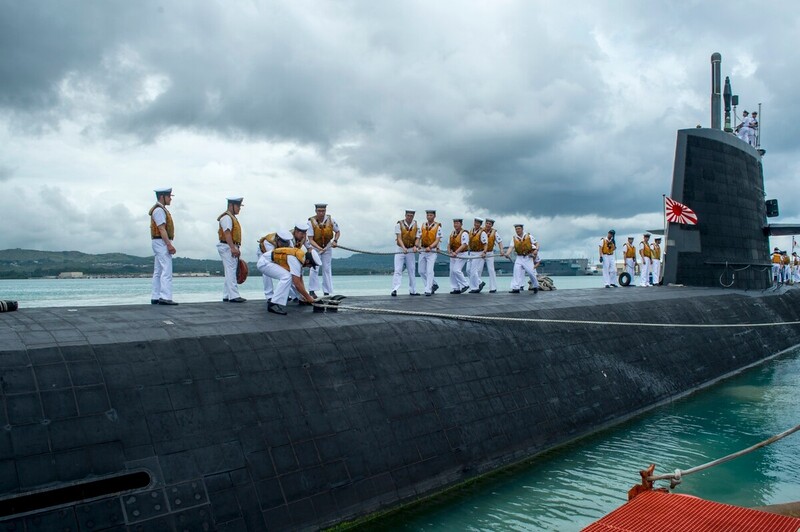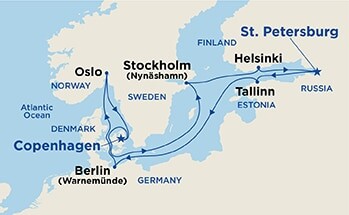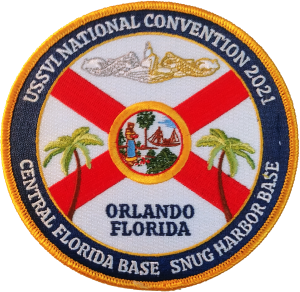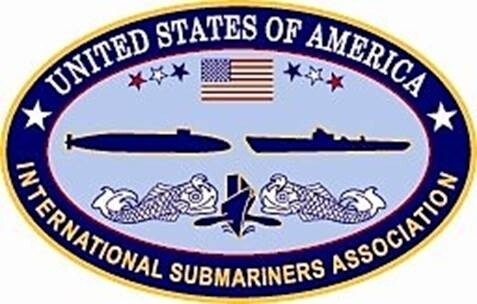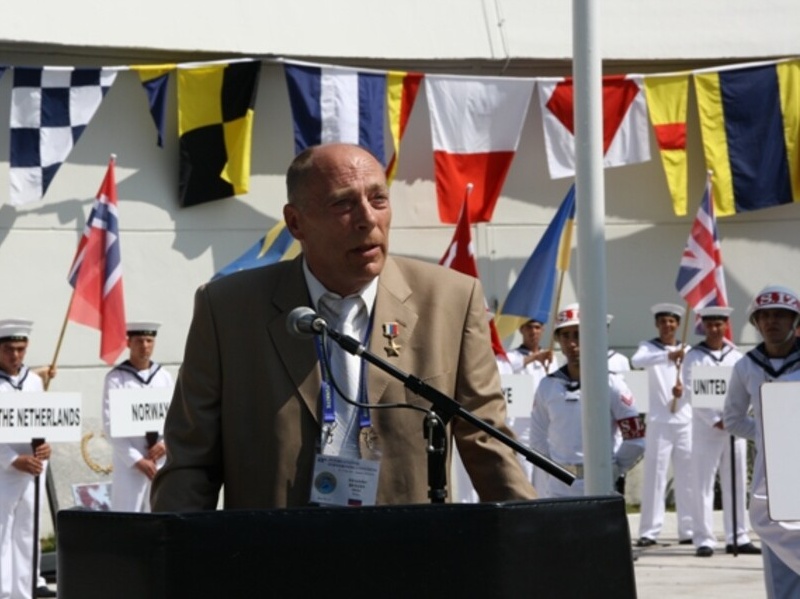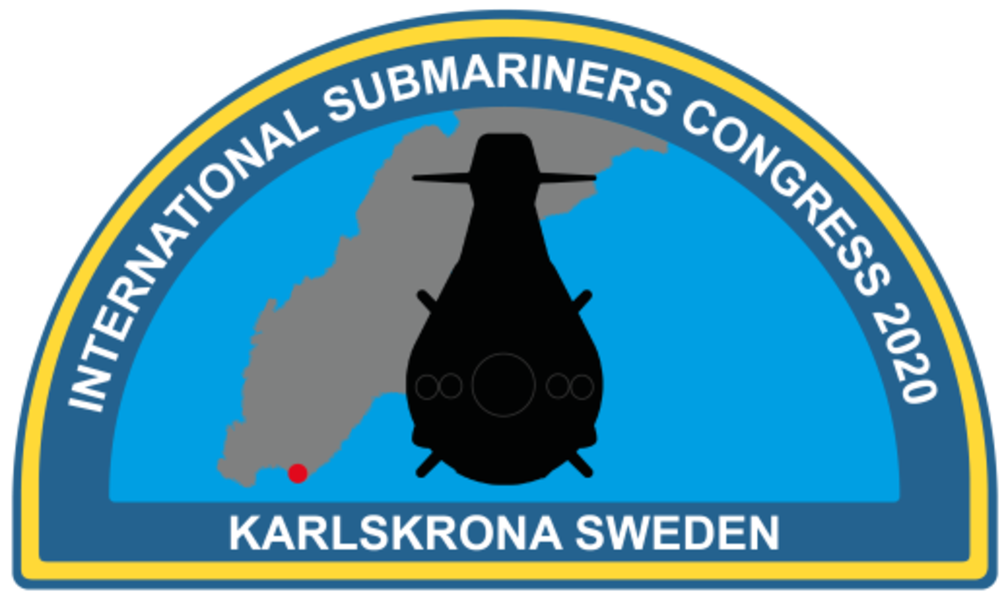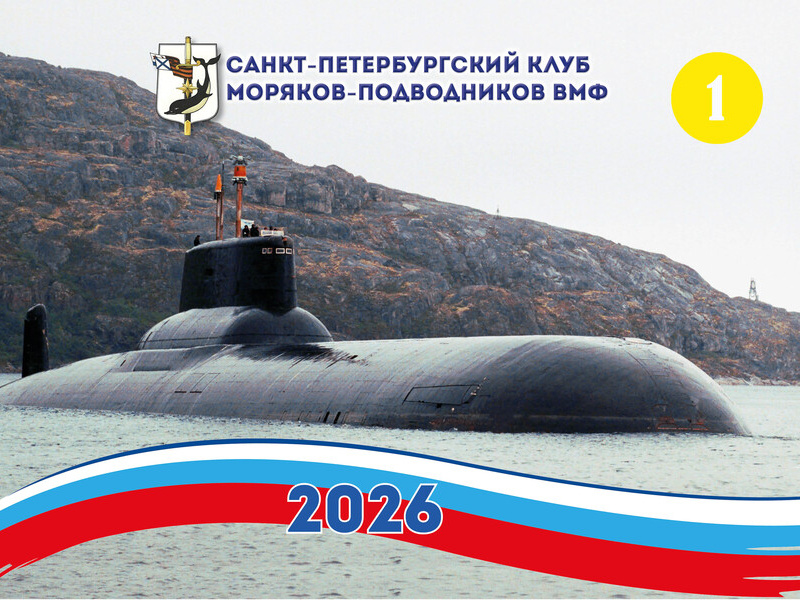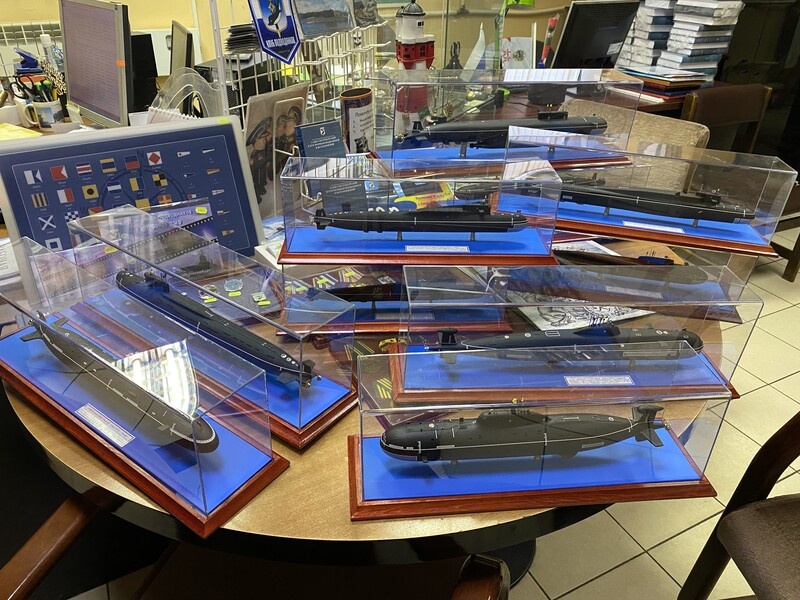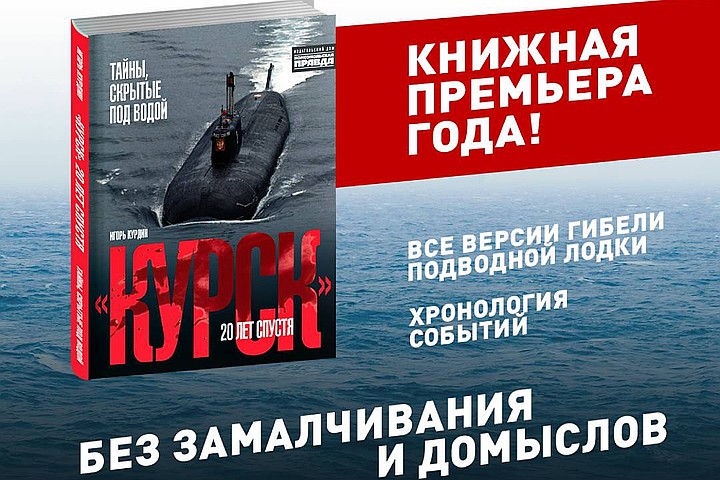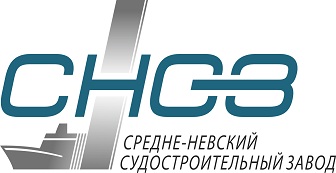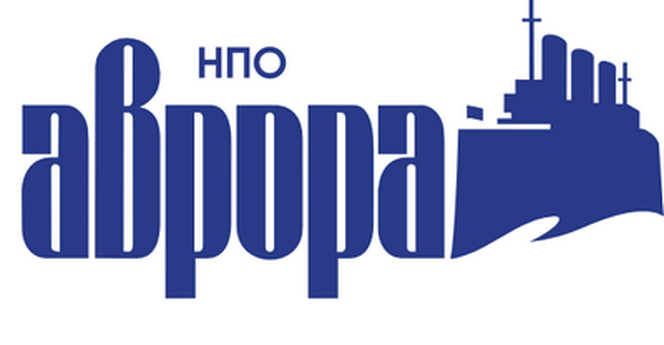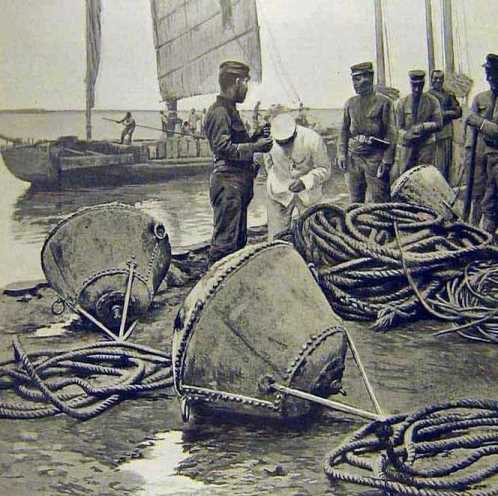USSVI Convention-Swedish Congress 2022-COVID-19 losses-Swedish Female Chief of operation-French Nuclear in China's pond-RN Torpedo-Iran's sub's hiding-1968 Loses-Japan sub accident -Razorback-USV-Names of Ships-Chinese Ship-New Trident-Russian Borei Subs
The Swedish International Convention (Congress) will meet tentatively, beginning on Sunday, May 22, 2022, and ending on Thursday, May 26, 2022. The Website for the Congress
Date: 16 Feb 2021
The Swedish International Convention (Congress) will meet tentatively, beginning on Sunday, May 22, 2022, and ending on Thursday, May 26, 2022. The Website for the Congress www.57isc.com
The Congress is held in the City of Karlskrona
Karlskrona is an old naval town located on the mainland and the islands to the east in the Blekinge archipelago. The city center is located on the island of Trossö, whose city plan and older buildings were set on the UNESCO World Heritage List as part of the Örlog town of Karlskrona in 1998.
An optional Baltic cruise is offered on Princess Cruise Lines. It leaves at 1800 on 28 May 2022. The trip of a lifetime makes port visits to:
Join 31 Other Nation's Submariners for fun and travel; once this Virus is gone.
|
|
|
|
|
|
Consider becoming a member of the ISA-USA; you will benefit in many ways.
- Be part of a 50-year tradition of international friendships of submarine sailors. Check out www.submariners.org for the history of the International Association
- Travel to foreign countries to participate in conventions that usually include thirty-one states in attendance.
- Establish friendships with submariners from other nations.
- Contribute your Submarine history and experience in our World Wide e-mail blast.
- We Cheerfully accept members that have not served but are interested in worldwide submarine activities
ISA/USA Lifetime membership only $50.00.
ISA/USA Membership Application. All new ISA/USA members receive a Membership card, ISA/USA Patch, and a new larger Vest Pin. On our weblink below and print an application:
Send completed form and membership fee to:
John Bud Cunnally E.T.C. (S.S.) Ret. U.S.N. – President
International Submariners Association of the U.S.A. (ISA/USA)
4704 Coppola Drive
Mount Dora, Fl 32757-8069
It’s a long time until Sweeden.
United States Submarine Vets Inc. NATIONAL CONVENTION
Orlando, FL
August 30 – September 04, 2021
Welcome To Orlando, Shipmates!
Central Florida & Snug Harbor Base
are your hosts for the 2021 USSVI National Convention
Hotel Registration Convention Registration
Rosen Shingle Creek 9939 Universal Blvd., Orlando, FL 32819
We have a group rate of $105.00 per night per room.
Attendees can also contact the hotel reservations department directly at 866-996-6338 and use code USSVI-2021 National Convention.
The cut-off date for the Room Block is August 01, 2021.
Reservations made after this date may be made at the Convention rate based on room availability.
Our annual convention is one of the largest and most exciting annual gatherings of submarine veterans in the U.S. This event offers attendees the environment, the setting, and the unique opportunity to meet with fellow submariners to exchange ideas, reminisce, and keep up to date on important information. Details about the convention, available services, and calendar of events can be found on this site.
Submarine Chief Petty Officer and an IT2 (S.S.) who died of COVID-19 complications identified. “Sailors Rest Your Oars.”
2 days ago
A sailor assigned to the blue crew of the ballistic missile submarine Tennessee died Thursday, Feb. 4, 2021, of COVID-19-related complications, the Navy said. (Navy)
The U.S. Navy identified a submarine petty officer who died of COVID-19 Thursday as Information Systems Technician (Submarines) 2nd Class Cody Andrew-Godfredson Myers.
The 26-year-old Washington native was assigned to the blue crew of the Georgia-based ballistic missile submarine Tennessee and is one of two active-duty sailors to die this week after contracting the novel coronavirus.
Myers had been placed in quarantine on Jan. 18 as a precaution after close contact with an individual who tested positive for COVID-19, Naval Submarine Forces said Friday in a statement.
“Sailors who may have been in contact with Myers have been notified already and have taken the appropriate precautions,” the command said.
Tennessee sailors are being supported by chaplains and embedded mental health specialists at Georgia’s Naval Submarine Base Kings Bay.
Navy chief dies of COVID complications
Chief Quartermaster Herbert Rojas died in his home Tuesday.
The Navy also announced Friday that Chief Quartermaster Herbert Rojas, a 50-year-old staff instructor at Recruit Training Command Great Lakes, Illinois, died Tuesday at his home of COVID-related complications.
Lt. Cmdr. Phil Chitty, a spokesman for Naval Service Training Command, said Rojas had recently tested positive but was asymptomatic at his positive test.
Chitty declined to say when Rojas was tested but said it was part of “sentinel surveillance testing” for all Recruit Training Command staff members.
R.T.C.’s surveillance involves randomly testing 10 percent of R.T.C. staff each week, with all staff being tested over ten weeks, Chitty said.
The source of Rojas’ infection remains unknown, Chitty said, but “a contact tracing investigation was done to identify anyone at Recruit Training Command with possible contact.”
“The priority with contact tracing contains a potential spread of COVID-19,” he added.
Chitty said Rojas’ contracting of the Virus is not believed to be connected to any other outbreak among staff or recruits at Great Lakes.
At least 21 service members have died from COVID-19, according to a Pentagon tally of cases and deaths.
Swedish Navy Chief: Russian Gray Zone Threats Makes Presence, Info-Sharing Critical
By: Megan Eckstein
January 26, 2021 2:53
Chief of Swedish Navy Rear Adm. Ewa Skoog Haslum. Swedish Armed Forces Photo
The threat of Russian gray zone activity in Northern European waters makes at-sea presence and information-sharing all the more critical, the chief of the Swedish Navy said today in an online event.
Rear Adm. Ewa Skoog Haslum said during an American Enterprise Institute online discussion today that the Baltic and North seas are busy waters for merchant, military, and recreational traffic and that keeping the waters free and safe is important to Sweden, which is not a NATO member but a close partner to the alliance.
Though Russia is not taking actions in the region that rise to the level of needing a military response, she said it has become increasingly crucial for the Swedish Navy, Swedish civilian agencies, and international navies to work together to be present, have good maritime surveillance and share information so that Russian harassment of other vessels or other gray -zone actions don’t go unnoticed.
“It’s straightforward to hamper or harass without anyone [seeing] it or [knowing] it – that is maybe the worst problem if you compare [the maritime environment to] what can happen ashore,” she said.
“That’s why we are very much concerned of always be present at sea because then we can be the eyes at sea, and we can also both show our flag, of course to other nations but also to show that we are ready to protect the merchant shipping if that’s the one being harassed.”
A US Air Force MC-130J Commando II aircraft and the Swedish Navy Visby-class corvette HMS Nyköping (K34) complete divisional tactics with the Arleigh Burke-class guided-missile destroyer USS Ross (DDG-71) on Nov. 15, 2020. US Navy Photo
After being asked about Sweden’s long coastline, with an archipelago that can be difficult to monitor, Haslum said Sweden faces a “total defense task to solve because it’s not only the military that can provide the security” for the country. She said the Swedish Navy was working with domestic agencies and international partners to share “trustworthy” data that could help keep the shores and nearby waters safe and free.
Among the challenges, Haslum said she faces in this effort is the movement of information – not only in keeping it safe from being intercepted, manipulated, or blocked but also in ensuring the Swedish Navy and its partners have interoperable systems that can share data in real-time.
When it comes to working with international navies, she said Sweden is making procurement decisions that could support a “day-zero connectivity” goal. When it joins with NATO navies for exercises, they can seamlessly come together and begin working without any troubleshooting to get connected.
Haslam's comments come shortly after the Navy's Department released an updated strategy called A Blue Arctic: A Strategic Blueprint for the Arctic, which prioritizes many of the same goals Haslum outlined. The U.S. Arctic strategy calls for an increased presence in the High North – from manned and unmanned platforms – to allow for more surveillance as well as a presence that could deter aggression from Russia and China. The strategy focuses on day-to-day competition, which includes some of the gray-zone activities Sweden and other European navies are worried about, and taking action to ensure the waters remain free for all as new navigation routes open up.
In the same event, U.S. 2nd Fleet Commander Vice Adm. Andrew Lewis also spoke of the importance of these exercises, saying in a previous exercise with the Swedish Navy he “learned more than I ever thought I would learn about mine countermeasures, about anti-submarine warfare, about operating in a very restricted waterway.”
Lewis repeatedly spoke about the need to be present in the Atlantic, the Baltic, the Arctic, and other High North water bodies. He made clear the U.S. Navy couldn’t provide enough presence on its own and was reliant on partners to help serve as eyes and ears for a network of allies and partners working together to push back against Russian activities that go against international standards of conduct.
Since the 2nd Fleet reached its initial operational capability two years ago, many of its most prominent operations have relied heavily on collaborations with allies and partners. Lewis noted that when he commanded the Baltic Operations (BALTOPS) 2019 exercise, he had just 50 staff members assigned to the 2nd Fleet at the time but a staff of 450 running the exercise from command ship USS Mount Whitney (LCC-20) thanks to allies and partners sending their best officers to fill out the staff.
“2nd Fleet would not be where it is as a command now without Sweden and other partners in our command network. Absolutely would not be,” he said during the event.
“And I am extremely grateful for the nations and the organizations that we have partnered with and gotten assistance from, to include the U.S. 6th Fleet as well and the U.S. 4th Fleet down in Mayport, Fla.”
French Nuclear Attack Boat Patrolled South China Sea
By: Xavier Vavasseur
February 10, 2021 1:46 PM
Attack boat F.S. Emeraude (S604) and frigate F.S. Vendemiaire (F734). French Armed Forces Photo
A French Navy Rubis-class nuclear-powered submarine (SSN) patrolled the South China Sea, the French minister of armed forces announced in a series of tweets.
French armed forces minister Florence Parly called the patrol “a striking proof of the capacity of the French Navy to deploy far and for a long time in connection with their Australian, American, and Japanese strategic partners.”
On Monday night, Parly shed some light on the current deployment of Rubis-class SSN FS Emeraude (S604) to the Pacific region. In a series of messages on Twitter, she said:
“Since September, a nuclear attack submarine (SSN Émeraude) and a support vessel (BSAM Seine) have sailed up to 15,000 km from the coasts of mainland France in the Indian Ocean and the Pacific. This special patrol has just completed a passage in the South China Sea. A striking proof of our French Navy's capacity to deploy far and for a long time in connection with our Australian, American, and Japanese strategic partners. Why such a mission? To enrich our knowledge of this area and affirm that international law is the only valid rule, whatever the sea in which we sail. Nations of the Indo-Pacific (~ 2 million inhabitants), France has the 2nd largest exclusive economic zone globally (11 million km2 of which nine are in the Indo-Pacific). We intend to protect our sovereignty and our interests.”
Naval News first reported about Emeraude’s mission to the Pacific when it stopped over in Australia. The submarine then visited the U.S. naval base in Guam and participated in anti-submarine warfare (A.S.W.) exercise with the U.S. Navy and JMSDF. Following an exercise with the Indonesian Navy, Emeraude will likely join the French carrier strike group set to depart this week for the Indian Ocean and Persian Gulf region.
On the same day as Parly’s message, the Indonesia Navy announced that it had conducted a joint exercise with the French Navy in the Sunda Strait. Commander of Indonesian vessel K.R.I. Barakuda-633, Marine Major Faisal Yanova Tanjung, said: “the exercise involved three Indonesian and two French warships, the ships namely K.R.I. Barakuda (633), K.R.I. Tenggiri (865), K.R.I. Cakalang (852) and two French warships, the frigate F.S. Vendemiaire (F734) and the submarine F.S. Emeraude.“
Indonesian Chief of Fleet Command I Rear Adm. Abdul Rasyid said the naval exercise also serves as military diplomacy. “We hope it will strengthen our international relations,” said in a statement Rasyid.
This is not the first time a French SSN has deployed to the Pacific Ocean, but such events are rare. This operation was never publicly disclosed before the port of call in Australia. It shows that the aging Rubis-class SSN is still capable of long-distance and long-duration deployments. The Rubis-class will be gradually replaced by the new Suffren-class SSN over the coming decade.
French Armed Forces photo
France maintains a presence in the region via its overseas territories, including Mayotte and La Réunion islands, Scattered Islands and French Southern and Antarctic Territories, New Caledonia, Wallis and Futuna, French Polynesia, and Clipperton. About 93 percent of its exclusive economic zone (EEZ) is located in the Indian and Pacific Oceans. The region is home to 1.5 million French people and 8,000 armed forces personnel stationed in the region. Additionally, the French Navy has vessels based in the region, and mainland France assets deploy to the region, including submarines.
H.M.S. Talent carries out Spearfish torpedo trials off Scotland
The Royal Navy’s submarine H.M.S. Talent (S92) has put the new torpedo through its final trials – including firing the lethal weapon at itself.
The Trafalgar-class boat – whose mission is to hunt and, if necessary, kill hostile submarines – fired the upgraded Spearfish on the ranges near the Isle of Skye to test it before it enters service rigorously.
During the three-day trial, the Spearfish was fired at Talent three times – and was programmed to safely pass the submarine to ensure there was no risk of the boat torpedoing herself.
As explained, the trials provided valuable data in the final stages of the upgraded torpedo’s development ahead of its impending entry into service.
“The Spearfish upgrade will ensure the submarine service continues to possess a very credible weapon system, capable of dealing with potential future threats,” Commander Paul Jamieson, Commanding Officer of H.M.S. Talent, said.
Spearfish has been the Royal Navy’s heavyweight torpedo for nearly 30 years and can break the back of frigates, destroyers, and similar-sized warships, as well as take out any underwater threats.
The enhanced torpedo features a new warhead, new, safer fuel system, a smarter electronic ‘brain,’ and a fiber-optic guidance link with its parent submarine to improve its accuracy and lethality.
The second time Talent, the second oldest boat in the R.N.’s flotilla, was selected for Spearfish trials, with a Royal Navy, Defence Equipment & Support, and B.A.E. team heading aboard.
A dummy run saw the first of four torpedoes launched into a target vessel before three successful firings pitched Talent against herself, avoiding striking her using ‘geographical depth separation.’
The torpedoes were then recovered. Work is now ongoing to study the data from the trial to support decisions made in the program's next phases as the torpedo moves towards Initial Operating Capability.
The operational version of the weapon will be introduced to all front-line Royal Navy submarines by 2025.
Last month, B.A.E. Systems secured a £230 million (about $315 million) contract from the Royal Navy to upgrade Spearfish and Sting Ray torpedoes.
Iran’s Best Submarines Have Been Out of the Water for a Month
By: H I Sutton
January 31, 2021 2:53 PM
H I Sutton Image. Used with permission
While the Iranian naval forces have been clashing with U.S. forces in the Middles East in the last several weeks, its most capable submarines have been out of action.
New information shared by The Intel Lab shows all three of Tehran’s Kilo-class submarines have been out of the water for almost a month.
The 3,000-ton Kilos are the Iranian Navy’s largest and most potent submarines. They are based at Bandar Abbas near the Strait of Hormuz at the entrance to the Persian Gulf. The Russian-built boats are armed with up to 18 torpedoes and can remain submerged for several days at a time. They are, logically, central to the Iranian Navy’s ability to defend the country.
Having all three out of the water at once is unusual and may indicate a broader serviceability issue. Navies try to rotate maintenance periods to keep as many submarines in the water as possible. For a navy with three submarines, like Iran’s Kilos, this should mean that at least one is in the water at any point in time.
Tehran could view the addition of Iran’s 600-ton indigenous Fateh-class submarines as enough capacity to allow all three of the Kilos to be out of the water at once. First-in-class Fateh has been tied up to the submarine pier in Bandar Abbas throughout. But Fateh is much smaller and less capable than the Kilos.
Iranian Fateh submarine. ONI Photo
Iran also has a sizable fleet of midget submarines. These are the locally designed Nahang-class boats and around 14 (estimates vary) of the North Korean-derived Ghadir-class. They can be armed with heavyweight torpedoes and the small Jask-2 anti-ship missile. But they are not comparable in either role or capability to the much larger Kilos.
The Kilos have been overhauled in local facilities rather than being sent back to more experienced Russian yards. These periods have been longer than expected and may indicate supply or skills shortages. According to satellite photos, one of the boats has been in a dry dock in Bandar Abbas since 2019. Another has been at the Shahid Darvish yard west of the city for months. And in mid-December, the third was also put in a dry dock in Bandar Abbas. As of Jan. 31, the situation remains unchanged.
The extended repair of Iran’s Kilos has not been confirmed. But it certainly raises questions. Iran is now building indigenous submarines and has even claimed to be working on a nuclear-powered boat. But even if the new subs are more capable than the small Fateh class, local production will take years to fill the Kilos' shoes. Until then, analysts will be observing Iran’s maintenance cycles.
News of the sidelined Kilos come as tensions between Iran and the U.S at sea remain high.
Iran shared footage that appeared to show an Iranian Navy helicopter observing guided-missile submarine U.S.S. Georgia (SSBN-729). Two days later, Iran fired a volley of ballistic missiles, which reportedly landed within 100 miles of the U.S.S. Nimitz (CVN-68).
Possibly the American naval forces were observing Iran’s first indigenous patrol submarine for Fateh. This small submarine was reported to be conducting its first torpedo tests.
Nineteen Sixty Eight-The year of Submarine losses
He originally Answered: What could have happened the the four submarines that sunk in 1968 that no one seems to figure out?
U.S.S. Scorpion (SSN-589) is one of two nuclear submarines the U.S. Navy has lost.. It was one of four mysterious submarine disappearances in 1968, the others being the Israeli submarine I.N.S. Dakar, the French submarine Minerve and the Soviet submarine K-129.
French submarine Minerve (S647) - Wikipedia Seems likely a combination of snorkel and bad weather.
Flore, sister ship of Minerve
On January 27, 1968, at 07:55 hrs, Minerve was traveling just beneath the surface of the Gulf of Lion using her snorkel, roughly 25 nautical miles (46 km) from her base in Toulon, when she advised an accompanying Breguet Atlantic aircraft that she would be at her berth in about an hour. However, this was the last time the boat and her crew of six officers and 46 sailors were seen. She disappeared in waters between 1,000 meters (3,300 ft) and 2,000 meters (6,600 ft) deep.
Commander Philipe Bouillot later said that Minerve's new captain Lieutenant André Fauve had spent 7,000 hours submerged over four years on the same class submarines and never had a problem. The only factor known that could have caused her to sink was the weather, which was extremely bad at the time of her loss.
The French Navy promptly launched a search for the missing submarine mobilizing numerous ships, including the aircraft carrier Clemenceau and the submersible SP-350 Denise under the supervision of Jacques Cousteau, but found nothing, and the operation was called off on 2 February. However, under the name Operation Reminercontinued into 1969, the search for Minerve utilized the submersible Archimède with the U.S. survey ship USNS Mizar. To this day, notrace of the vessel has been found.I.N.S. Dakar - Wikipedia - May have been a case of diving in an area shallower than thе minimum required/recommended depth.
General Azab mentioned that the submarine might have crashed into the seabed due to the shallow depth of water in that region, about 36 meters, while it needed at least 40 meters to dive. It appears that the submarine commander took the risk.
At 06:10 on 24 January 1968, Dakar transmitted her position, 34.16°N 26.26°E, just east of Crete. Over the next 18 hours she sent three control transmissions, which did not include her position. Her final broadcast was at 00:02 25 January, after which no further transmissions were received.
On 26 January, the British Admiralty reported the submarine was missing and gave the last known position as 100 miles (160 km) west of Cyprus. An international search and rescue operation began, including units from Israel, the United States, Greece, Turkey, Britain, and Lebanon. Although the Israeli Navy in Haifa began broadcasting calls to commercial vessels to be on the lookout for Dakar, Israeli officials would not admit the submarine was missing. On 27 January, a radio station in Nicosia, Cyprus, received a distress call on the frequency of Dakar's emergency buoy, apparently from the south-east of Cyprus. Still, no further traces of the submarine were found. On 31 January, all non-Israeli forces abandoned their search at sunset. Israeli forces continued the search for another four days, ceasing at sundown on 4 February 1968.
Israel denied that Dakar sank due to hostile action and stated that Dakar was involved in crash-diving exercises on its return voyage and was lost probably as a result of a mechanical failure. On 25 April 1968, Vice Admiral Abraham Botzer, commander of the Israeli Navy, stated that Dakar sank on 24 January 1968, two days before being reported missing due to "technical or human malfunctioning" and not "foul play."
Soviet submarine K-129 (1960) - Wikipedia
Several theories
The official Soviet Navy hypothesis is that K-129 while operating in snorkel mode, slipped below its operating depth. Such an event, combined with a mechanical failure or improper crew reaction, can cause flooding sufficient to sink the boat.
This account, however, has not been accepted by many, and four alternative theories have been advanced to explain the loss of K-129:
1. A hydrogen explosion in the batteries while charging;
2. A collision with U.S.S. Swordfish;
3. A missile explosion caused by a leaking missile door seal;
4. Intentional or unintentional scuttle by the crew due to K-129 violating standard operating procedures and departing from authorized operating areas.
Reportedly, as many as 40 of the complement of 98 were new to the submarine for this deployment.
K-129 was approximately midway through standard shore leave/replenishment and repair when a new mission was tasked.
Note an additional explanation was provided in the comments that I thought were worth adding to the answer's body.
Regarding K-129, there has been more information declassified as of late that suggests the loss was due to a missile warhead's non-nuclear high explosive lense detonated, causing a rupture of the pressure hull just aft of the con. The reason for the detonation is presently hotly contested. One theory is agents of the K.G.B. took control of the sub and attempted a non-sanctioned attack on Hawaii. As the wreck was found over a thousand miles south of its standard operating box this theory has gained quite a bit of leg. Unless Putin declassifies the K.G.B. and old Soviet naval records, we may never know the true fate of K-129.
U.S.S. Scorpion (SSN-589) - Wikipedia Several theories but likely to be a torpedo explosion.
A later theory was that a torpedo might have exploded in the tube, caused by an uncontrollable fire in the torpedo room. The book Blind Man's Bluff documents findings and investigation by Dr. John Craven, who surmised that a likely cause could have been the overheating of a faulty battery.
The Mark 46 silver-zinc battery used in the Mark 37 torpedo tended to overheat, and in extreme cases, it could cause a strong enough fire to cause a low-order detonation of the warhead. If such a detonation had occurred, it might have opened the boat's sizeable torpedo-loading hatch and caused Scorpion to flood and sink. However, while Mark 46 batteries have been known to generate so much heat that the torpedo casings blistered, none is known to have damaged a boat or caused an explosion.
Dr. John Craven mentions that he did not work on the Mark 37 torpedo's propulsion system and only became aware of the possibility of a battery explosion twenty years after the loss of Scorpion. In his book The Silent War, he recounts running a simulation with former Scorpion executive officer Lieutenant Commander Robert Fountain, Jr. commanding the simulator. Fountain was told he was headed home at 18 knots (33 km/h) at a depth of his choice; then there was an alarm of "hot running torpedo." Fountain responded with "right full rudder," a quick turn that would activate a safety device and keep the torpedo from arming. Then an explosion in the torpedo room was introduced into the simulation. Fountain ordered emergency procedures to surface the boat, stated Dr. Craven, "but instead she continued to plummet, reaching collapse depth and imploding in ninety seconds – one second shy of the acoustic record of the actual event."
Craven, who was the Chief Scientist of the Navy's Special Projects Office, which had management responsibility for the design, development, construction, operational test and evaluation and maintenance of the UGM-27 Polaris Fleet Missile System, had long believed Scorpion was struck by her torpedo but revised his views during the mid-1990s when he learned that engineers testing Mark 46 batteries at Keyport, Washington just before the Scorpion's loss, said the batteries leaked electrolyte and sometimes burned while outside their casings during lifetime shock, heat and cold testing. Although the battery manufacturer was accused of building bad batteries, it was later able to successfully prove its batteries were no more prone to failure than those made by other manufacturers.
The results of the U.S. Navy's various investigations into the loss of Scorpion are inconclusive. While the court of inquiry never endorsed Dr. Craven's torpedo theory regarding the loss of Scorpion, its "findings of facts" released in 1993 carried Craven's torpedo theory at the head of a list of possible causes of Scorpion's loss.
With Japanese sub-damaged in a collision, where does maritime readiness stand?
By: Mike Yeo 10 hours ago
7
The Japanese submarine JS Soryu arrives in Guam for a port visit in June 2018. (Lt. Lauren Spaziano/U.S. Navy)
MELBOURNE, Australia — A Japanese submarine is damaged after colliding with a commercial ship in international waters off Japan on Monday, resulting in slight injuries to three crew members.
According to Japan’s Ministry of Defense, the diesel-electric submarine JS Soryu hit the commercial bulk carrier Ocean Artemis. It surfaced in waters south of Cape Ashizuri in Kochi prefecture on the Japanese island of Shikoku on Monday morning local time.
The ministry added that the damage sustained by the Soryu was worse than initially thought, with the conning tower warped and the starboard hydroplane — which is used to adjust the submarine’s depth underwater — almost broken off.
The collision also damaged the antenna mast array of the submarine, including the periscope and communications antenna, leaving the Soryu unable to report the incident via normal communications channels.
As a result, the submarine, which was on a training sortie when the incident occurred, had to get within mobile phone coverage before contacting the Kure naval base to report the incident.
However, the submarine was able to sail under its power to the nearby port of Kochi, and the three injured crew members were not seriously injured. They did not require evacuation to a hospital.
The Soryu’s home port usually is the Japan Maritime Self-Defense Force’s base at Kure. The boat is part of Submarine Squadron Five of the JMSDF’s 1st Submarine Flotilla. The 2,950-ton, 84-meter submarine is the lead boat of a class of 12, and it is widely regarded as one of the best diesel-electric submarine designs in the world.
Japan’s Coast Guard said it is investigating the incident, and the JMSDF is assessing the damage to the submarine.
Collin Koh, a research fellow at the Institute of Defence and Strategic Studies at the S. Rajaratnam School of International Studies in Singapore, told Defense News that based on photos released by the Japanese Coast Guard, it does not appear the submarine’s pressure hull was damaged.
He added that while the damage looks like it could be repaired with relative ease, “the boat will still have to undergo post-repairs trials to evaluate its quieting ability — that is, to ensure the boat passes the required standards for acoustic signature while underway to be deemed operationally ready and safe to reinstate into service.”
That process could take months, if not a year, to complete.
However, Koh does not foresee a submarine gap for the JMSDF due to the Soryu being out of action during repairs. He noted that Japan has a fleet of 22 submarines as well as two training submarines in service.
What might affect the tempo of JMSDF submarine operations in the wake of the collision is the likelihood that there will be a comprehensive review and reassessment of operational safety norms in the wake of this high-profile incident. That could place a further strain on a force that has admitted to being under pressure from an expanding set of mission demands.
Navy Hopes to Deploy its Early Razorback UUVs Soon Even As Development Continues on Updated Capability
By: Megan Eckstein
February 1, 2021 2:40 PM
Operations Specialist First Class Sean McNamara launches the Mk 18 Mod 2 Kingfish for an initial underwater survey of Sweeper Cove on Adak Island in Alaska’s Aleutian chain. EODMU 1 is providing expeditionary mine countermeasures support in support of Arctic Expeditionary Capabilities Exercise 2019. EODMU 1 provides operational E.O.D. Capabilities include locating, identifying, rendering safe, exploiting, recovering, and disposing of all explosive ordnance. U.S. Navy photo
The Navy plans to deploy the early models of its Razorback medium-sized unmanned underwater “as soon as we can,” even as the service is procuring an upgraded model.
The first version of the Razorback UUV was meant to be deployed and recovered from a submarine’s dry deck shelter, carrying with it environment-sensing payloads that could help submarines have eyes in more places underwater.
Those UUVs are delivering now, even as the Navy has already put out a request for proposals for the next iteration of the UUV that would be launched and recovered from a torpedo tube – meaning divers wouldn’t have to go out into the water to help get the unmanned craft started on a mission or bring it back into the sub afterward.
Capt Pete Small, unmanned maritime systems program manager (PMS 406) within the Program Executive Office for Unmanned and Small Combatants, said last week at a virtual conference hosted by the American Society of Naval Engineers that the Navy would take delivery of nine dry deck shelter versions of the vehicle – two of which are already being used for testing at the Unmanned Underwater Vehicle Squadron (UUVRON) and seven of which are still pending delivery.
The vehicles at the UUVRON are “really more training assets and initial vehicles, but we will take seven more, and we do intend to deploy those on missions as soon as we can. And there’s a number of things in the fire working to make that happen,” Small said in response to a question from USNI News during a panel presentation.
“So that is the intent to do that, and we do intend to, again, further develop that capability to get the divers out of the loop with later vehicles.”
An Mk 18 Mod 2 Kingfish sits on a rigid-hull inflatable boat operated by an unmanned systems platoon under E.O.D. Mobile Unit 1 out of Naval Station Point Loma, Calif., on Feb. 11, 2019. USNI News photo
The next iteration of the Razorback will achieve two things: it will simplify the process for submarine crews to launch and recover the vehicles on their own without putting divers in the water, and it will mark the beginning of a standard medium UUV program that will support both the submarine community and the explosive ordnance disposal community.
Within the E.O.D. Community, expeditionary mine countermeasures companies’ unmanned systems platoons operate an Mk 18 Mod 2 Kingfish UUV to comb the ocean floor for mines or other obstacles or reacquire a previously found mine for further examination. These UUVs operate different sensors than the Razorback, but the Navy ultimately decided to field a standard MUUV body that could carry different sensor packages for each community. In the ExMCM companies, the UUV is launched and recovered from a pier or a rigid-hull inflatable boat in the water.
The Navy is similarly executing an acquisition strategy for its large UUV that incrementally increases capability. A Phase 1 design of its Snakehead Large Displacement UUV, which has been described as a government-led prototyping effort, will deliver this fiscal year and begin in-water testing. The Phase 2 LDUUV would be “larger, more capable and help us to complete the submarine integration and develop a capable large displacement UUV for deep, long-endurance and large-payload operations in the undersea,” Small said during the panel discussion.
During the question-and-answer session, he told USNI News that that first vessel would likely be too busy doing risk-reduction testing to be used operationally. However, he didn’t rule out that possibility entirely.
“We have a lot of testing planned for that. Certainly, if the opportunity arose where we were past that risk-reduction testing and had an opportunity to deploy it, then we would always evaluate that. Still, we feel that with that one vehicle, we’ll be fully engaged in testing and risk-reduction in support of Phase 2 for the foreseeable future,” he said.
Small said five Orca XLUUVs are in fabrication in the extra-large UUV portfolio and would deliver and begin in-water testing in the coming years.
U.S. Navy to Expand Land-Based Testing for Unmanned Vessels, Conduct Offensive Firepower Analysis for U.S.V.s
By: Megan Eckstein
January 25, 2021 2:39 PM
Medium displacement unmanned surface vehicle (MDUSV) prototype Sea Hunter is moored onboard Joint Base Pearl Harbor-Hickam, Hawaii. U.S. Navy Photo
A longstanding slogan for the best use of unmanned systems is to perform “dull, dirty and dangerous” missions instead of humans.
Early unmanned systems development embraced this idea, with the Navy developed and fielded systems to “mow the lawn” in minefields and conduct round-the-clock maritime surveillance.
Now, with the Navy on the cusp of taking delivery of a small fleet of larger unmanned surface vessel prototypes and developing the battle network that will connect them to the Fleet, the unmanned maritime system program office is overseeing several “initiatives that will help focus on what unmanned systems can bring to the dangerous missions and not just the dull and dirty ones,” program manager Capt. Pete Small said earlier this month.
Today, the Navy has 15 unmanned underwater vehicles and seven unmanned surface vessels of all shapes and sizes in fabrication. Small said during a briefing at the annual Surface Navy Association symposium. About two years from now, the Surface Development Squadron-1 (SURFDEVRON) organization that oversees medium and large U.S.V.s will have seven prototypes at its disposal for a range of activities for experimentation, fleet integration, the concept of operations development, and reliability testing.
Early unmanned systems focused on finding mines and other underwater obstacles or conducting maritime surveillance: missions where sensors will be found mostly nothing until an object of interest suddenly appears, and the system can pick out the object and alert a human, rather than the human watching all the nothingness in real-time.
But new operating concepts and the recent tri-service maritime strategy and the chief of naval operations’ Navigation Plan call for unmanned systems to take on a much more active role in warfighting, Small said.
Among the ideas, the Navy was most interested in was arming Large U.S.V.s with missiles, an idea that was quickly shot down by lawmakers.
190724-N-AK002-1124
ATLANTIC OCEAN (July 24, 2019) A Knifefish unmanned undersea vehicle (UUV) training model undergoes crane operations aboard the Military Sealift Command expeditionary fast transport vessel USNS Spearhead (T-EPF 1) as part of a training exercise enabling mine countermeasure missions (MCM) from an E.P.F. as a Vessel of Opportunity (V.O.O.). Knifefish is a medium-class mine countermeasure UUV designed for deployment off the littoral combat ship. (U.S. Navy photo by Master-at-Arms 1st Class Alexander Knapp/Released)
Small said in his briefing that the Navy was making progress towards that vision, with plans to analyze alternatives for offensive surface fires, including the vertical launch system-enabled LUSV concept, and plans to expand land-based prototyping efforts for the hull, mechanical and electrical (HM&E) system automation and reliability to address congressional concerns.
“We understand what their concerns are,” Small said of lawmakers on the House and Senate armed services committees.
“They did, I’ll say, slow down our plans to develop a LUSV with V.L.S. very specifically and very carefully. In the same regard, they very specifically did support our efforts to continue the experimentation that I described, especially with our Overlord U.S.V.s and Sea Hunters and our pursuit of the hull, mechanical and electrical automation, and reliability. So they did very much slow us down on LUSV with V.L.S., and we’ll assess and continue that dialogue. Still, they very much supported our continuing efforts to demonstrate the technologies that they’re asking us to respond to.”
Lawmakers worried the Navy was moving so quickly on unmanned vessels despite no proof that their HM&E systems could operate autonomously for weeks or months without human intervention or maintenance. On the VLS-enabled LUSV idea, lawmakers worried that the vessel could be hacked or physically overtaken by an adversary, among other concerns related to an unmanned vessel launching deadly missiles.
The Navy is getting after the latter concerns through its development of the Navy Operational Architecture (N.O.A.) and Project Overmatch, which would net manned and unmanned ships and aircraft together to allow the best sensor to direct the best shooter to engage an adversary – regardless of whether the sensor and shooter were manned or unmanned.
On the reliability side, Small said ongoing at-sea testing was proving out the HM&E reliability and the maturity of the autonomy systems and that upcoming land-based testing would rigorously test the HM&E systems further. As a result of the delays and changed strategy on LUSV procurement, the Navy awarded six contracts to the industry for LUSV studies. Small said his team was in regular talks with the industry teams and focused on reliability.
A Ghost Fleet Overlord test vessel takes part in a capstone demonstration during the conclusion of Phase I of the program in September. Two existing commercial fast supply vessels were converted into unmanned surface vessels (U.S.V.s) for Overlord testing, which will play a vital role in informing the Navy’s new classes U.S.V.s. U.S. Navy photo.
At sea, already the sailors at SURFDEVRON have had several opportunities to prototype the typical controller being developed by Small’s program office and use it to control an Overlord large U.S.V. during at-sea operations. In one case, as USNI News first reported, one of the two Pentagon-bought Overlord U.S.V.s transited from the Gulf Coast to Southern California autonomously. Small said SURFDEVRON sailors from an operations center in San Diego managed the transit.
“This long transit was over 4,700 nautical miles total traveled, and over 97 percent of those miles were accomplished in autonomy mode. The only time that vessel was not in autonomy mode during the transit was during the brief period where it transited the Panama Canal,” he said.
In May, that same vessel had transported from the Gulf Coast to the East coast, traveling more than 3,000 nautical miles for seven days in autonomous mode.
Since arriving in California, the Overlord U.S.V. participated in exercise Dawn Blitz, marking the first time manned and unmanned systems had been integrated during this exercise. Small said the vessel spent more than five days at sea, with 98 percent of that time in autonomous mode while being controlled by SURFDEVRON sailors ashore.
“Not only are we demonstrating increasingly capable unmanned surface vehicle technology, but we are rapidly advancing the Navy’s ability to conduct extended unmanned surface vehicle operations via a remote control interface,” he said.
The Sea Hunter medium U.S.V. has operated at sea alongside warships for several advanced tactical training events, again with SURFDEVRON sailors controlling the vessel.
By Fiscal Year 2023, Small said SURFDEVRON would operate four Overlord U.S.V.s – two bought by the Pentagon, two bought by the Navy, and Sea Hunter and sister ship Sea Hawk, and an MUSV prototype the Navy awarded to L3Harris last year.
U.S. Navy unveils names of five future vessels
January 18, 2021, by Naida Hakirevic
The U.S. Navy will name three future vessels after ships steeped in naval history and two others after a Medal of Honor recipient and a Native American tribe, Kenneth J. Braithwaite, Secretary of the U.S. Navy, revealed on 15 January.
Braithwaite detailed the announcement on 8 January during a visit to one of the Navy’s first heavy frigates and oldest commissioned ship afloat – U.S.S. Constitution.
Along with the ship names, Braithwaite also selected individuals who will be recognized as sponsors for several ships he recently named.
The future ships will bear the names and hull numbers:
- U.S.S. Chesapeake (F.F.G. 64)
- U.S.S. Silversides (SSN 807)
- U.S.S. Pittsburgh (L.P.D. 31)
- USNS Lenni Lenape (T-ATS 9)
- USS Robert E. Simanek (ESB 7)
The future Constellation-class frigate U.S.S. Chesapeake (F.F.G. 64) will be named for one of the first six navy frigates authorized by the Naval Act of 1794. The first U.S.S. Chesapeake served with honor against the Barbary Pirates in early 1800. Following an at-sea battle with H.M.S. Shannon in 1813, the ship was captured by the Royal Navy and commissioned her H.M.S. Chesapeake. Braithwaite recently travelled to England to retrieve a piece of the original frigate from the Chesapeake Mill in Hampshire.
To honor the Silent Service, the future Virginia-class attack submarine U.S.S. Silversides (SSN 807) will carry the name of a WWII Gato-class submarine. The first Silversides (SS 236) completed 14 tours beneath the Pacific Ocean, spanning WWII. She inflicted heavy damage on enemy shipping, saved downed aviators, and even drew enemy fire to protect a fellow submarine. A second Silversides (SSN 679) was a Sturgeon-class submarine that served during the Cold War. This will be the third naval vessel to carry the name Silversides. The name comes from a small fish marked with a silvery stripe along each side of its body.
US SECNAV unveils names of another two Virginia-class attack
CATEGORIES:
- VESSELS
Posted:1 months ago
What is more, the future San Antonio-class amphibious transport dock will be named U.S.S. Pittsburgh (LPD 31) as the fifth navy vessel to bear the name. The first was an ironclad gunboat that served during the American Civil War. The second USS Pittsburgh (CA 4) was an armored cruiser that served during WWI, and a third USS Pittsburgh (CA 72) was a Baltimore-class cruiser that served during WWII – supporting the landing at Iwo Jima. The fourth USS Pittsburgh (SSN 720) was a Los Angeles-class submarine that served the US Navy from December 1984 to August 2019.
To honor the Lenape Nation of Pennsylvania, a future Navajo-class towing, salvage, and rescue ship will be named USNS Lenni Lenape (T-ATS 9). This will be the first naval vessel to carry the name of the Lenni Lenape tribe, who are indigenous people of the Northeastern Woodlands, and the first tribe to sign a treaty with the United States in 1778.
The future USNS Lenni Lenape will join USNS Muscogee Creek Nation (T-ATS 10), USNS Navajo (T-ATS 6), USNS Cherokee Nation (T-ATS 7), and USNS Saginaw Ojibwe Anishinabek (T-ATS 8), providing a wide range of missions including open-ocean towing, oil spill response, humanitarian assistance, and wide-area search and surveillance.
Also joining the Fleet will be the first expeditionary sea base USS Robert E. Simanek (ESB 7), carrying the name of Marine Corps Medal of Honor recipient Private First Class Robert Ernest Simanek, who earned the nation’s highest medal for valor for his actions during the Korean War when he unhesitatingly threw himself on a deadly missile to shield his fellow Marines from severe injury or death.
Simanek, a Detroit, Michigan native, joined the Marine Corps in August 1951. He was just 22 years old when he sailed for Korea, joining Company F, 2d Battalion, 5th Marines in May 1952 to serve as a rifleman and as a radioman when needed. In addition to the Medal of Honor and Purple Heart, he was also awarded the Korean Service Medal with two bronze stars.
The US Navy’s two future Virginia-class attack submarines will be named USS Tang and USS Wahoo, Kenneth J. Braithwaite, Secretary of the Navy, said.
USS Tang (SSN 805) and USS Wahoo (SSN 806) will carry the names of two-storied World War II submarines.
“The success in battle both previous namesakes endured will undoubtedly bring great pride to the future crews of USS Tang and USS Wahoo,” Braithwaite commented.
This year, Braithwaite also named the USS Barb (SSN 804), another future Virginia-class attack submarine.
“Along with the previously named USS Barb (SSN 804), these boats will honor the strong traditions and heritage of the silent service.”
This will be the third time that the name Tang and Wahoo will be used for US Navy submarines.
Last year, the US Navy also unveiled the names of the first two Block V Virginia-class submarines, USS Oklahoma (SSN 802) and USS Arizona (SSN 803).
Block V Virginia-class submarines
In December 2019, the US Navy awarded General Dynamics Electric Boat a contract valued at $22.2 billion for the construction of nine new Virginia-class submarines.
The contract also includes the option of a tenth ship to be built within the contract time frame, bringing the total potential contract value to approximately $24.1 billion.
Chinese Survey Ship Caught ‘Running Dark’ Give Clues to Underwater Drone Operations
By: H I Sutton
January 16, 2021, 11:48 AM
HI Sutton Image
A Chinese government survey ship was intercepted “running dark” without broadcasting its position via AIS (Automated Information System by Indonesian officials. The incident is the latest twist in an ongoing maritime saga, which has also seen Chinese uncrewed underwater vehicles (UUVs) found in Indonesia’s territorial waters.
The survey ship, Xiang Yang Hong 03, left its base at Sanya on Hainan Island, China, on the morning of Jan. 6. The Indonesian Coast Guard intercepted it near the Sunda Strait during the week of January 11. All ships transiting the strategically important strait are required to be on AIS, and when confronted, the crew Xiang Yang Hong 03claimed that its AIS was damaged, according to press reports.
“Indonesia requires all ships transiting the world’s only archipelagic sea lanes to have functioning AIS and forbids them from carrying out oceanographic research,” according to Asia Times.
“The Maritime Security Agency said the Xiang Yang Hong 03 killed its transponder twice while passing through the Natuna islands at the southern end of the South China Sea and later in the Karimata Strait, northeast of the island of Belitung.”
The interception comes after a Chinese-made Sea Wing UUV was discovered in Indonesian waters in late December. It was the latest of at least four Sea Wing gilder UUVs discovered in the region. Gilders are commonly used to gather data about currents, acoustics, and the maritime environment. They use forward momentum created by repeatedly sinking and then rising in a method called variable-buoyancy propulsion. Many countries operate underwater gliders. The primary U.S. equivalent is the Slocum G3, which the US.. Navy has deployed as the LBS-G (Littoral Battlespace Sensing-Glider).
Undated photo of Xiang Yang Hong 03
The data gathered by gliders can be used for legitimate scientific research. But it can also be used for naval intelligence, including for planning submarine operations. The same is true of the data gathered by the ship's sensors such as side-scan sonar and remotely operated vehicles (ROVs). The survey ships are often used to gather naval intelligence depending on where and what data they gather.
The discovery has led some to think China is gathering intelligence in Indonesian waters. This could relate to Chinese Navy (PLAN) submarine operations. The Sunda Strait, together with the Lombok Strait and Malacca Strait, are strategic choke points between the South China Sea and the Indian Ocean. All involve transiting Indonesian waters. If the PLAN is to operate more in the Indian ocean, it will need to consider the safest routes through these areas that would require an extensive survey operation.
Xiang Yang Hong 03 is a regular visitor through Indonesian and the Indian Ocean Analysis by The Intel Lab. Using AIS data provided by MarineTraffic.com shows several voyages to the Indian Ocean in the past two years.
In November 2019, she passed through the Sunda Strait into the Indian Ocean, where she surveyed the deep waters to the west of Indonesia and up into the Bay of Bengal. This area is considered critical to the submarine operations of both India and Australia. A year later, in November 2020, she was in the Indian ocean again, carrying out an extensive survey in the Arabian Sea.
Whether Xiang Yang Hong 03’s activities are directly related to submarine activity, other naval intelligence, or legitimate scientific research is difficult to prove but raises the question about Chinese intentions in the region.
“These discoveries in Indonesian waters suggest we should be paying a lot more attention to what the Chinese are doing and why,” Australian Strategic Policy Institute (ASPI) analyst Malcolm Davis told Asia Times.
Wolfe: Modernized Trident Missiles Require Rigorous Testing As Navy Builds Columbia-Class
By: John Grady
January 15, 2021 12:58 PM
An unarmed Trident II D5 missile launches from the Ohio-class ballistic missile submarine USS Nebraska (SSBN-739) off California's coast. US Navy Photo
The senior admiral directing the strategic systems program emphasized the rigorous testing of modernized Trident missiles to ensure their accuracy and reliability. The Navy transitions from the Ohio-class to the Columbia-class ballistic missile submarines.
Speaking Thursday at an online forum of the Air Force Association’s Mitchell Institute, Vice Adm. Johnny Wolfe said, “I have to keep that reliability for the next 60 years.” The incremental approach of modernizing electronics and guidance, for example, are the steps the military is taking “to get maximum life of all those things that won’t age out” over that time.
He said the Trident D5 Extension Life II upgrade would start this year. “From a missile perspective … we have to make sure that it is rock solid.” He called this “the big-ticket for us” in the coming year.
Wolfe added, “As the Columbia platforms get out there [in the early 2030s], the weapons system will be proven.” He said the Navy would be buying an additional 108 missiles for its inventory to be used for deployment and testing.
As for the W93 Mark 7 warhead program that sits atop the Trident D5, “we need to start the investment” and examine the technology now to stay ahead of potential threats, he said. The National Nuclear Security Administration, a semi-autonomous body in the Department of Energy, is a critical player in weapons modernization and the development of propulsion systems. It came under intense congressional scrutiny last year over its spending priorities.
“My money goes to all the non-nuclear,” Wolfe added.
In answer to a question as to whether having two fewer Columbia-class submarines than the 14 currently in the Fleet will affect deterrence, he said, “time offline will be less” for maintenance, such as the two to three years needed for mid-life refueling now. That translates into more time on patrol rather than in the shipyard.
Wolfe said the replacement for the Ohio–class ballistic missile submarines remains “the Navy’s no. 1 [spending] priority.” To keep costs under control and delivery of the first submarine on schedule, he said the Navy has learned much from the Virginia-class and its modernized payload and adopted mature design concepts into planning.
In his directorate, “we built strategic weapons ashore” facilities for advanced prototyping and testing for both the Ohio and Columbia-class platforms to assist the transition.
Likewise, “we’re in lockstep” with everything the United Kingdom is doing in its transition from its Vanguard-class ballistic missile submarines to Dreadnought.
Wolfe said an Analysis of Alternatives for a sea-launched nuclear cruise missile would be finished this year, and design could start in 2022 with a spending request. In answer to another question, he said, “if you have a sea-launched cruise missile, it changes [potential adversaries’] calculations” about a possible attack. “I think we’re raising the threshold” of deterrence by pursuing this, Wolfe said. He specifically cited Russia’s deployment of tactical nuclear weapons on cruise missiles on its borders and its doctrine of “escalate to de-escalate” as the threat to be deterred.
Earlier, Wolfe noted that “Russia certainly has a triad” of nuclear deterrent forces, and “China is on its way to a triad.”
For the United States, the triad of sea-based ballistic missiles, land-based ballistic missiles, and bombers “are the right way to go.” The combination affects potential adversaries’ “thought calculus” because “you can’t just go after one thing,” even on land-based systems because they have different ranges and targeting
Sevmash to build two more Borei-A ballistic missile submarines for the Russian Navy
January 15, 2021, by Naida Hakirevic
Russian shipyard Sevmash, part of the United Shipbuilding Corporation (USC), revealed it would build two more Project 955-A Borei-A class nuclear-powered ballistic missile submarines (SSBNs) for the Russian Navy.
The contract for the construction of the submarine pair was signed in 2020.
As informed, the units will be named Dmitry Donskoy and Knyaz Potjomkin. Their construction is expected to commence later this year. Like their sister's vessels, each submarine will be able to carry 16 Bulava ballistic missiles.
A total of eight modernized Borei-A submarines are planned to be built at the Sevmash yard in Severodvinsk.
In June 2020, the Russian Navy welcomed the first improved Borei-A submarine, Knyaz Vladimir.
The second newbuild, Knyaz Oleg, was launched in July 2020. It is currently undergoing factory tests, according to Sevmash.
Three more Project 955-A nuclear submarines —
Generalissimus Suvorov, Imperator Aleksandr III, and Knyaz Pozharskiy — are in various construction phases at the yard.
Thank You
John Bud Cunnally ETC (SS) Ret. USN – President
International Submariners Association of the U.S.A. (ISA/USA)
4704 Coppola Drive
Mount Dora, Fl 32757-8069
352-729-4097 Home
352-638-1955 Cell





